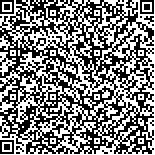Archive > Volume 47 Issue 5 > 2021,47(5):627-637. DOI:10.7519/j.issn.1000-0526.2021.05.011 Prev Next
Preliminary Application of FY-4A Satellite Data in Dense Fog Weather Events at Urumqi International Airport
- Article
- Figures
- Metrics
- Preview PDF
- Reference
- Related
- Cited by
- Materials
Abstract:
Using FY-4A images generated by advanced geosynchronous radiation imager (ARGI) and level 2 satellite cloud product data and surface observation data, this paper analyzes two dense fog weather events that happened in 25-26 January 2019 and in 17-18 March 2019 at Urumqi International Airport. The results show that we can use Channel 3 (BD0.83 μm), Channel 6 (BD2.2 μm) Channel 8 (BD3.725 μm) and Channel 12 (BD10.8 μm) to monitoring the range of dense fog and the cloud structure features of fog top and the temperature of fog area during the daytime. Dissipation of fog has a good reflection on satellite images. At night, the difference between BD10.8 μm and BD3.725 μm (BTD10.8 μm-3.725 μm) and images of BD10.8 μm can be combined to identify the night foggy area, and the greater the bright temperature difference in the BTD10.8 μm-3.725 μm channels, the denser the fog. FY-4A satellite cloud top height and cloud classification products have more meticulous features on microphysical characteristics of dense fog. It is very effective in monitoring night dense fog and it also can make up for the deficiency of visible channels such as from Channel 1 to Channel 3, Channel 6 and Channel 8, which can only be used in the daytime.
Keywords:
Project Supported:
Clc Number:


Mobile website









